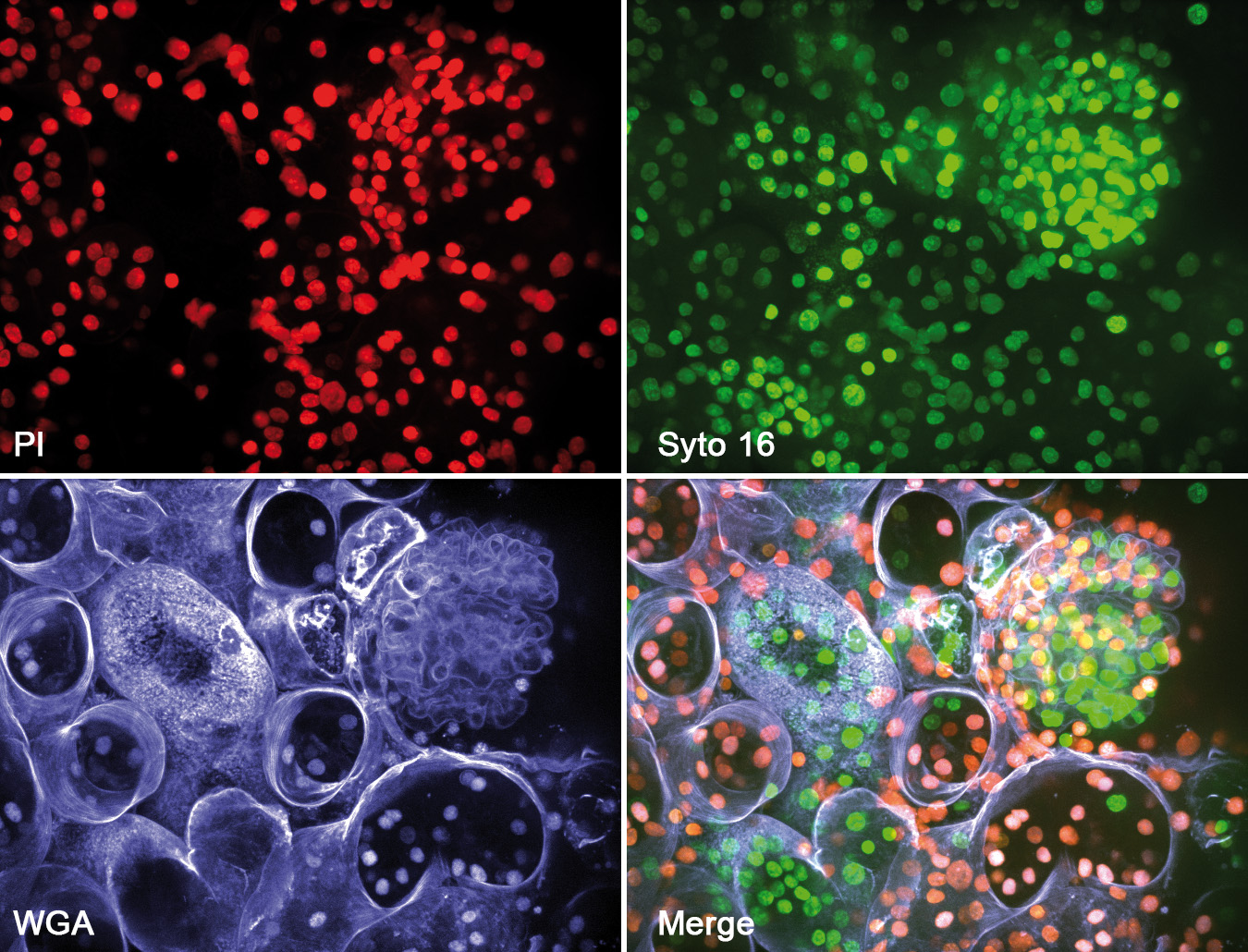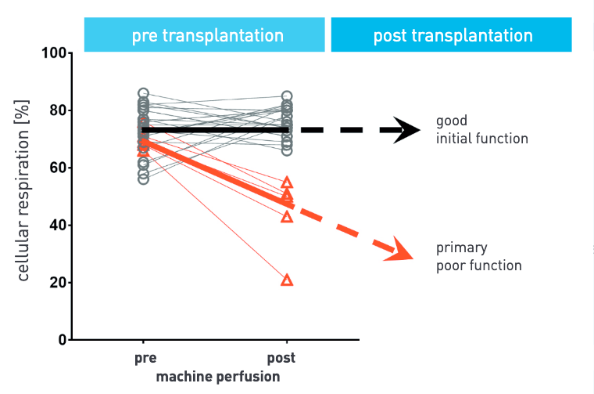
Innsbruck Info
Organ preservation via normothermic machine perfusion
A routine at the transplantation center Innsbruck
The Medical University of Innsbruck has a pioneering role in this discipline. Our center is amongst the first worldwide to implement the novel technology of NMP as a clinical routine in liver transplantation. Beyond the clinical utilization, the impact of NMP on organs is heavily investigated in a series of clinical studies. Currently, 50 % of kidneys and livers transplanted in Innsbruck are preserved and assessed prior to transplantation – through machine perfusion. The organs are monitored and treated at the intensive care unit equivalent to patients. Decisions on transplantation-eligibility are supported by the data collected during this period. The standards for this approach have been developed in Innsbruck.
Our study shows that particularly real-time confocal microscopic assessment provides decisive information to help identify impaired organ function. For this test, tissue samples are taken at regular intervals during machine perfusion and examined for cell viability and damage with a confocal microscope. This method was established in Innsbruck. It is simple and fast, and provides important aspects on both cell viability and integrity. Such information enables the decision-making process on whether to transplant an organ or not.
Confocal microscopy

Liver biopsies are incubated with specific dyes and analyzed with a confocal microscope. The damaged cells are stained red (Pi), while the viable cells are displayed in green (syto16). Wheat germ agglutinin (Wga, blue) is used to depict the cell integrity. The images are merged to obtain a consolidated picture.
We observed that changes in cell respiration during machine perfusion are correlated with impaired organ function after transplantation. Thus, liver biopsies are analyzed with a high-resolution respirometer, a device developed by oroboros in Innsbruck. The Innsbruck-based company offers unique experience within this field, and the application of this technology allows to predict organ functionality after transplantation.
Cellular respiration and function

Liver biopsies from an organ with poor initial organ function post transplantation (red) show a decrease in cell respiration and integrity during NMP. This is in contrast to the readout of a sample from a liver with good initial organ function (black). Ergo the method allows to predict poor organ function after transplantation.




